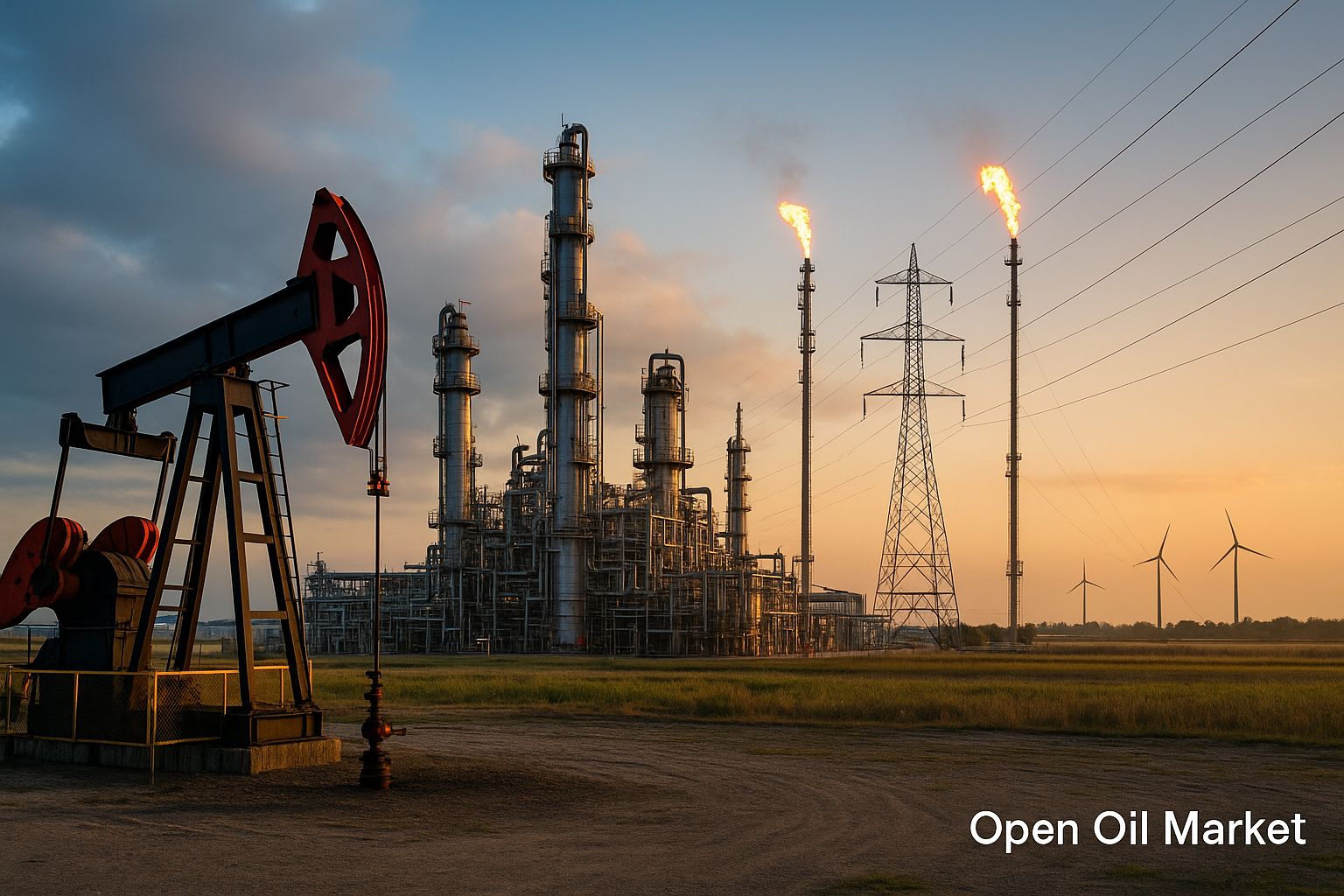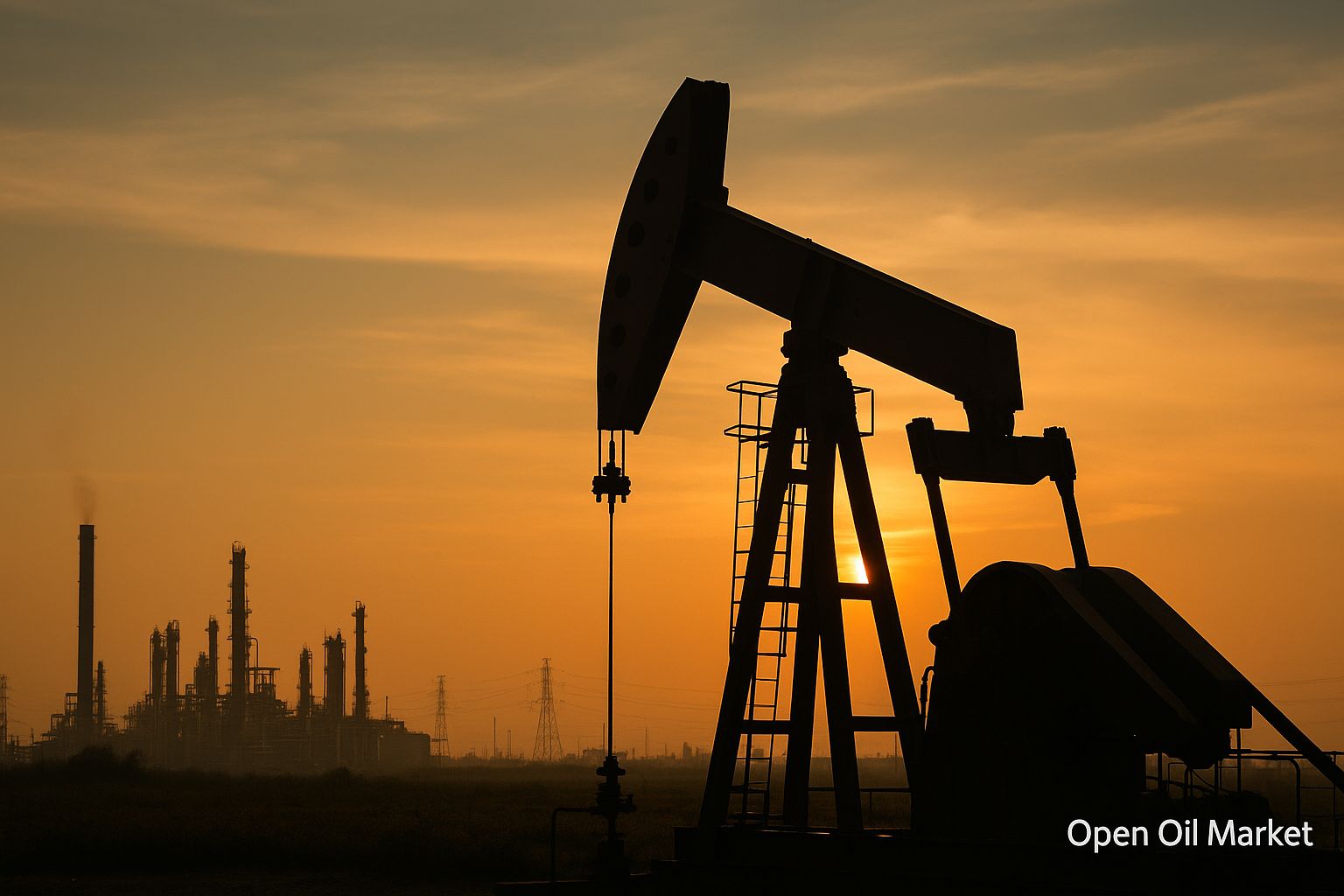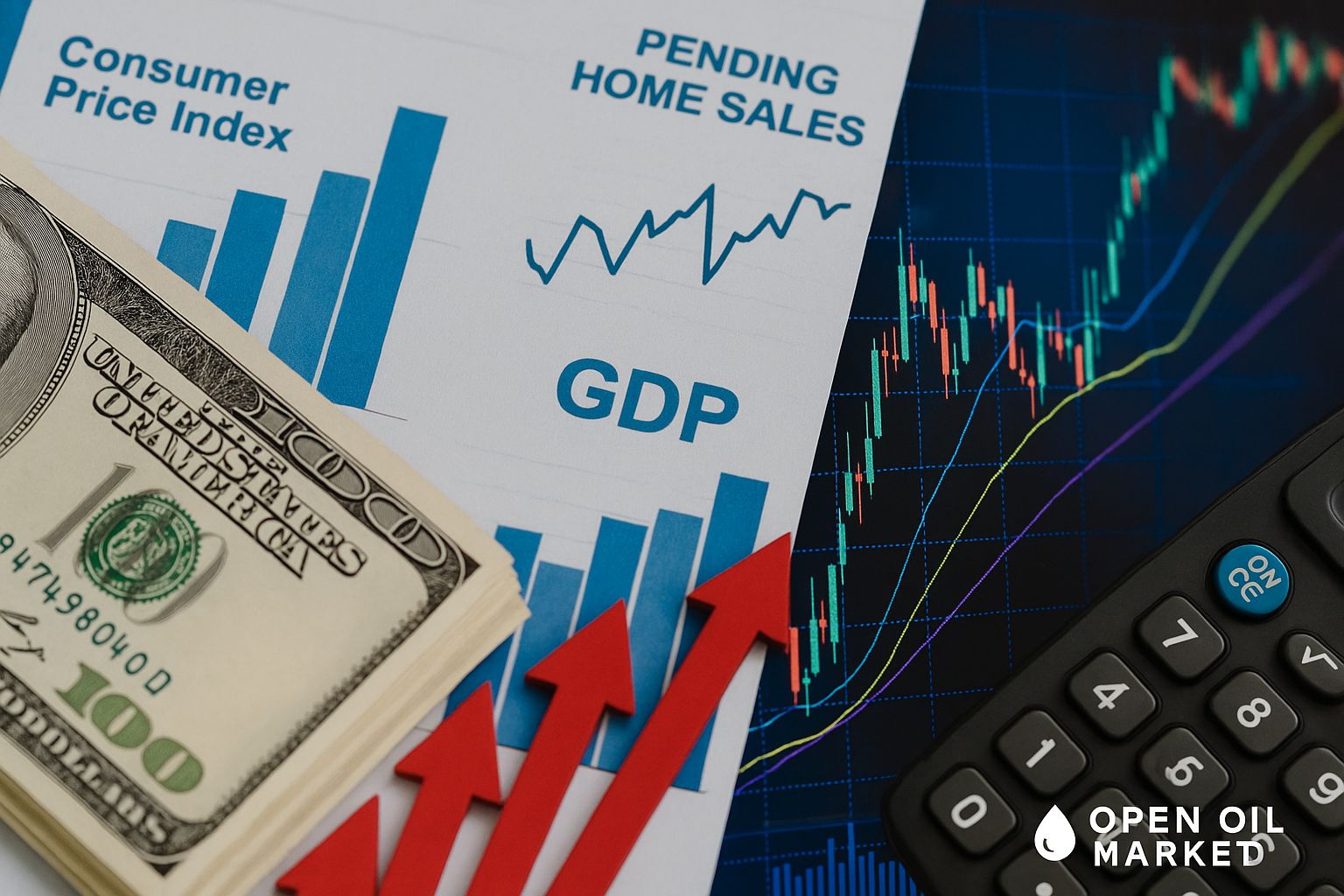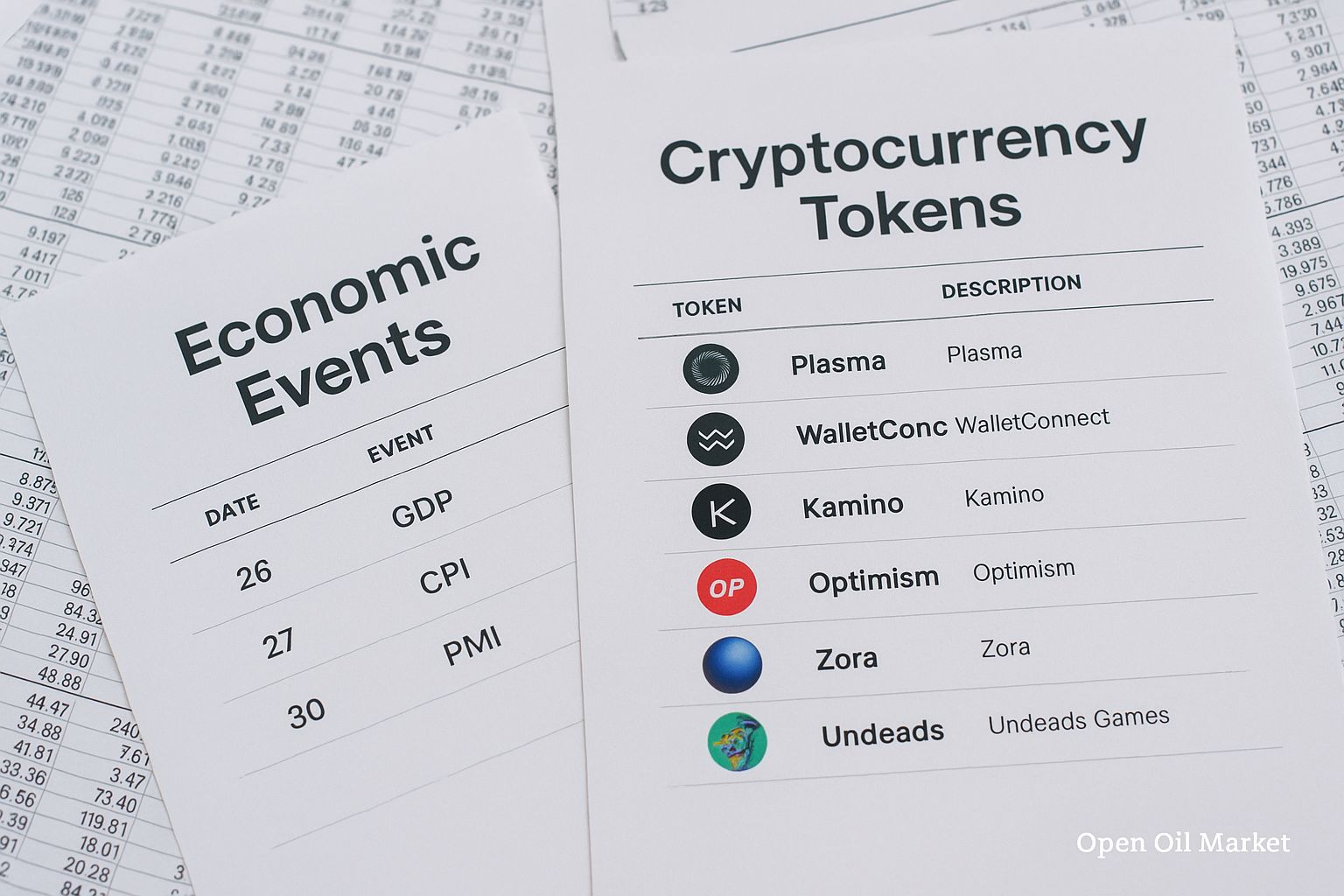
Main Energy Sector News as of September 19, 2025: Prospects for New Sanctions, Oil and Gas Price Dynamics, Energy Strategies of China and India, Continuation of Stabilization Measures in Russia, Renewable Energy Records, High Demand for Coal.
The current events in the fuel and energy complex (FEC) as of September 19, 2025, reflect both stabilization in the raw materials markets and ongoing geopolitical pressure. Western countries are preparing new restrictions against the Russian energy sector, maintaining a sanctions regime without visible easing. Meanwhile, the global oil market remains relatively stable: excess supply and moderate demand keep Brent prices around the upper $60 per barrel. The European gas market is entering the autumn season well-prepared – underground gas storage facilities (UGS) are nearly full, ensuring a high level of energy security and stabilizing prices. At the same time, the largest Asian economies, China and India, continue to actively increase their purchases of oil, gas, and coal, asserting their energy security strategies despite external pressures. The global transition to clean energy is gaining momentum: new records are being set in generation from renewable sources, although the resilience of energy systems still requires reliance on traditional resources. In Russia, following a recent sharp rise in fuel prices, authorities are extending and intensifying measures to stabilize the domestic market – from adjusting the damping mechanism to temporary export restrictions. Below is a detailed overview of key news and trends in the oil, gas, energy, and raw materials sectors as of the current date.
Oil Market: Limited Price Growth amid Excess Supply
Global oil prices at the end of the week show restrained dynamics. The benchmark Brent crude is holding around $66–68 per barrel, while American WTI is in the $62–64 range, approximately 10% below year-ago levels. The market has gradually settled from the peaks of the energy crisis of 2022–2023 and is influenced by a number of fundamental factors:
- OPEC+ Activity. The oil alliance continues to increase production, slowly lifting previously imposed restrictions. Since October, OPEC+ countries have been allowed to add an additional 137,000 barrels per day (after an increase of 548,000 bpd the month prior). Despite relatively low prices, key exporters are eager to regain lost market shares. Since April, production quotas have increased by approximately 2.5 million bpd, further saturating the market. At the recent OPEC+ technical group meeting held on September 18–19 in Vienna, delegates discussed the methodology for assessing maximum production capacities – this step may precede a future adjustment of quotas. The next full ministerial meeting of the alliance is scheduled for October 5, where the decision will be made on whether to maintain the current production ramp-up rates.
- Weak Demand. Global oil consumption is growing much more slowly than in previous years. According to the International Energy Agency (IEA), the increase in demand in 2025 will be less than 1 million barrels per day (for comparison: in 2023, it was over 2.5 million). OPEC also expects modest consumption growth at around 1.2–1.3 million bpd. The reasons include the slowdown of the global economy (especially the decrease in industrial growth rates in China) and the effect of last year's high prices, which spurred energy conservation. Additionally, demand is restrained by high inflation and tight monetary policy in several countries.
- Rising Stocks Outside OPEC. Commercial oil stocks in the U.S. unexpectedly increased in September, signaling a market surplus. American oil companies maintain production close to record levels (~13 million bpd), while U.S. authorities are not hurrying to actively replenish strategic reserves so as not to provoke additional demand. Furthermore, other non-OPEC producers – from Brazil and Canada to various African countries – are also ramping up production. Saudi Arabia, having concluded a summer period of high domestic consumption, sharply increased crude oil exports to regain its market share. Concurrently, the reduction of refined product exports from Russia has freed up additional volumes of crude oil for the global market.
- Geopolitics and Finance. The sanctions standoff between Russia and the West continues to create anxiety in the market: a certain "risk premium" in prices persists, accounting for potential disruptions in supplies. Simultaneously, diplomatic contacts and negotiations among major powers (e.g., the meeting of the leaders of Russia and the USA this summer in Alaska) keep hopes for gradual de-escalation alive, which limits price growth. In financial markets, a significant factor is the central banks' policy: the U.S. Federal Reserve cut the key rate for the first time this year (by 0.25 percentage points in September), signaling a softer approach due to economic slowdown. This led to a slight weakening of the dollar, temporarily supporting commodities, including oil. However, concerns about the pace of global economic growth and oversupply outweigh, preventing significant oil price increases.
In sum, the aforementioned factors keep the oil market in a state close to surplus. Prices fluctuate within a narrow corridor without prerequisites for a sharp rally but also without threats of a collapse. Many analysts believe that if current trends continue, oil will remain relatively cheap: the average Brent price in 2026 could drop closer to $55 per barrel. However, market participants also take into account the risks of unforeseen shocks – for example, escalation of conflicts in the Middle East or natural disasters that could temporarily disrupt production. In the current balance of excess supply, the strategies of companies and investors lean towards restraint and caution.
Gas Market: Full Storage in Europe and Price Stability
In the gas market, all attention is focused on Europe, which is confidently preparing for the winter season. EU countries have been rapidly filling natural gas storage throughout the summer, and by mid-September reserves reached over 92% of total UGS capacity – significantly above the target level originally set for early November. Near-full gas reserves provide the European energy system with a significant buffer ahead of the heating season. As a result, exchange prices for gas maintain a relatively low level: futures prices at the Dutch TTF hub hover around €30 per MWh (approximately $380 per 1000 cubic meters) – several times lower than the peak values from last winter. This price plateau indicates a balancing of supply and demand in the European market.
A record influx of liquefied natural gas (LNG) from various regions of the world plays an additional stabilizing role. After the turmoil of 2022–2023, European importers diversified their LNG supply sources: substantial volumes are sourced from the U.S., Qatar, African countries, and continue to arrive from Russia via intermediary traders. In the summer of 2025, Europe took advantage of relatively low spot prices and decreased competition from Asia to increase LNG purchases – during the season of weak Asian demand, European terminals operated at record capacities. These measures allowed for stockpiling additional volumes of gas and approaching winter without signs of shortage. At the beginning of the heating season, the European gas market appears resilient, and the current price level is comfortable for consumers and industry in the EU.
At the same time, experts warn that the favorable situation may change in the event of an extremely cold winter or unforeseen reductions in LNG supplies. Europe remains dependent on fuel imports: domestic natural gas production in the EU is steadily declining, and traditional pipeline supplies from Russia have been minimized due to sanctions and geopolitics. Nevertheless, accumulated reserves, diversification of LNG sources, and energy-saving measures allow for the hope that even in adverse scenarios of sharp shortages, negative impacts can be avoided. EU regulators are also developing new initiatives – from extending the joint gas purchasing mechanism to expedited renewable energy development – to enhance energy security and reduce price volatility in the future.
International Politics: Sanction Pressure without De-escalation
The geopolitical situation surrounding the energy sector remains tense. Following summer signals of readiness for dialogue, there have been no substantial breakthroughs. On the contrary, in September, Western allies reaffirmed their commitment to a hard line regarding Moscow. The United States is considering new restrictions against the Russian FEC – including on oil and LNG exporters as well as companies from other countries that help circumvent sanctions. The European Union, having postponed the presentation of the 19th sanctions package (originally expected on September 17), plans to further refine measures in partnership with G7 allies. According to media reports, the European Commission is set to unveil the new package on September 22 or early October. It is anticipated to affect major Russian oil and gas companies and banks, and uniquely target third countries: foreign refineries in India and China that continue to process Russian oil while bypassing imposed restrictions may fall under sanctions. Additionally, the EU is discussing the tightening of visa regulations for Russian citizens and other economic pressure measures.
Moscow, for its part, is striving to adapt to the realities of sanctions. Russian energy exports are actively being reoriented from Europe to Asia and the Middle East. The volumes of oil supplied are increasing primarily to India, China, Turkey, and some African states – often at discounts to global prices to retain buyers. According to Russian authorities, despite sanctions, federal budget revenues from oil and gas exports remain at an acceptable level thanks to sufficiently high raw material prices and a weak ruble. However, sanction pressures noticeably impact the technological development of the sector: access to modern equipment for the development of hard-to-reach fields is restricted, and foreign investors are reducing participation in new projects. This creates long-term risks for the Russian oil and gas sector.
Direct threats to infrastructure are also heightening the situation. In recent weeks, drone attacks on Russian FEC facilities have increased. For instance, on the night of September 18, a drone attack was conducted on a major petrochemical plant in Bashkortostan, resulting in a fire, and a few days prior, oil refineries in Leningrad and Saratov regions were targeted. While Russian air defense intercepts most drones, the mere occurrence of such incidents adds uncertainty to the markets and compels authorities to prioritize energy supply security. Overall, the sanctions conflict and military risks remain key factors of uncertainty for global energy. Markets are pricing in the prolonged nature of the confrontation, and energy companies are incorporating these risks into their planning. Even small signals of improving relations – such as a pause in sanction escalation or local agreements – can temporarily boost sentiment, but thus far such movements have remained limited in scope.
Asia: India and China Strengthen Energy Security
The Asian giants – India and China – continue to play a pivotal role in global energy resource markets, compensating for declining Western demand. These countries are simultaneously increasing imports and developing their own production, striving to meet the growing needs of their economies and safeguard against external shocks. Their policies combine pragmatism in supplier selection with active domestic investment in energy, significantly influencing global energy flows.
- India. Despite Western pressure, New Delhi has made it clear that a sharp reduction in imports of Russian hydrocarbons is unacceptable. Russia remains one of India’s largest oil suppliers, covering a significant portion of the Indian market's needs. Traders report that Indian refineries continue to buy Russian Urals oil at a discount of about $4–5 to Brent quotes, which helps control raw material costs. As a result, India not only maintains high levels of Russian oil purchases but also increases imports of petroleum products from Russia (including diesel) to satisfy domestic demand. Concurrently, the government is accelerating initiatives to reduce reliance on imports in the strategic long term: initiatives to increase domestic oil and gas production are underway. In August, Prime Minister Narendra Modi announced the launch of a large program for exploring offshore reserves – the state corporation ONGC has already begun drilling ultra-deep wells in the Andaman Sea, hoping to discover new fields. These steps bring India closer to its goal of increasing energy self-sufficiency, although in the coming years, the country will still rely on about 80% of its oil imports and 40% of its gas imports.
- China. The world’s second-largest economy is boosting its resource purchases while simultaneously investing in increasing domestic production. Beijing has not joined sanctions against Moscow and is taking advantage of the situation by purchasing Russian oil and gas under favorable conditions. Official data shows that in 2024, China imported over 212 million tons of oil and about 246 billion cubic meters of natural gas, surpassing the previous year's figures. In 2025, import growth continues, although at a slower pace due to a high base. Concurrently, Chinese oil and gas companies are setting their own production records: for the first eight months of 2025, approximately 145 million tons of oil (+1.5% year-on-year) and 175 billion cubic meters of gas (+5% year-on-year) were extracted in China. Domestic production covers part of the growing demand but not fully: experts note that China will still be importing around 70% of its consumed oil and 40% of its gas in the coming years. In an effort to strengthen long-term energy security, Beijing is expanding cooperation with Moscow. Pipeline gas purchases via the "Power of Siberia" have already increased, and key parameters of the future "Power of Siberia – 2" gas pipeline have been agreed upon, which will significantly boost Russian gas exports to China. Notably, China is willing to ignore external restrictions for its benefit: in recent months, Chinese companies have purchased several batches of liquefied gas from the new "Arctic LNG-2" project, despite U.S. sanctions against this facility. Moreover, a separate terminal for receiving such fuel has been allocated at the Beihai port, used exclusively for Russian LNG – this allows China to formally minimize sanction risks. Thus, both India and China demonstrate a readiness to secure energy resources based on national interests, even if it contradicts external pressures. Their activity remains a decisive factor in global demand growth for hydrocarbons and redistribution of trade flows of oil, gas, and coal.
Energy Transition: Records in Green Energy and the Importance of Traditional Resources
The global transition to clean energy in 2025 is entering a new phase. Record levels of capacity addition and electricity generation from renewable sources – primarily solar and wind – are being established in various regions of the world. By the end of 2024, total generation from solar and wind power plants in EU countries has for the first time surpassed generation from coal and gas power stations. This trend continues in 2025: due to active installation of new solar panels and wind farms, the share of "green" electricity in the EU continues to grow, exceeding 50% of consumption in certain months. In the United States, renewable energy has also reached historical maximums – over 30% of electricity generation comes from renewables, with total generation from wind and solar already surpassing production at coal plants. China, the global leader in renewable energy capacity, installs dozens of gigawatts of new solar and wind power plants annually, constantly breaking its own records in "green" generation.
Investors and energy companies are directing more funds towards the development of low-carbon energy. According to the IEA, total investments in the global energy sector in 2025 will exceed $3 trillion, with more than half allocated to renewable energy projects, modernization of electrical grid infrastructure, and energy storage systems. Traditionally, oil and gas-rich countries in the Middle East are also beginning to focus on solar and wind projects in preparation for declining global demand for fossil fuels. Concurrently, the largest oil and gas corporations are diversifying their businesses: units for hydrogen and biofuel production are being created, and carbon capture and storage (CCS) projects are being initiated – all in response to the growing demand from society and investors for decarbonizing the economy.
Meanwhile, the accelerated growth of the share of renewable energy brings new challenges for energy systems. As the solar and wind sector expands, generation variability increases – reserve capacity is needed on windless days and during nighttime. Many countries still have to rely on traditional sources – gas, coal, and nuclear power plants – to balance loads and ensure uninterrupted supply during peak hours. Large-scale projects are underway to create energy storage systems (industrial battery farms, pumped-storage power stations) and implement "smart" grids that enhance the flexibility of energy supply. Experts predict that by 2026–2027, total generation from renewable sources may take first place globally, overtaking coal in production volume. However, in the next few years, traditional resources – natural gas, coal, and nuclear energy – will continue to play a critical role in ensuring the stability of energy systems. Thus, the current phase of the energy transition is about finding an optimal balance in which "green" energy breaks growth records while classic hydrocarbon sources remain essential for reliable demand coverage.
Coal: High Asian Demand and Market Balance Maintenance
Despite the climate agenda, the global coal market in 2025 is operating at historically high levels. Global coal consumption remains close to the record volumes of 2022–2023, primarily driven by Asian countries. China continues to be the largest producer and consumer of coal: over 4 billion tons are mined annually, which are almost entirely consumed by Chinese power plants. During peak demand periods (for instance, during summer heat waves and increased air conditioning usage), even these volumes prove insufficient – Beijing increases coal imports to avoid electricity shortages. India generates about 70% of its electricity from coal-fired power plants, and absolute coal consumption continues to rise as the economy expands. Major developing countries in Southeast Asia (Indonesia, Vietnam, Thailand, etc.) are also commissioning new coal power capacities to meet the growing electricity demand.
Major coal exporters – Indonesia, Australia, Russia, South Africa, and others – have increased production and shipments in recent years, benefiting from the favorable market conditions. Following price spikes in 2021–2022, global prices for thermal coal have stabilized at moderate levels. For example, Australian coal is trading in the range of $130–150 per ton – considerably lower than peaks but still above the average values of the previous decade. This price level remains profitable for mining companies while also acceptable for consumers.
Many countries declare plans to gradually reduce coal usage to fulfill climate commitments; however, in the short term, this resource remains irreplaceable for ensuring reliable energy supply for hundreds of millions of people. Even in Europe, where decarbonization has been declared a priority, countries are compelled to keep coal power plants on standby: Germany, Poland, and several other states maintain some coal power plants in reserve in case of interruptions in gas supply or insufficient wind and solar generation. As a result, the global coal sector is currently in a state of relative equilibrium: demand remains robust due to Asia, supply is sufficient, and prices are predictable. In the long term, a gradual decline in coal's share in the energy balance is expected as climate policies intensify, but in the coming years, coal will continue to play a significant role, acting as a guarantor of energy security during peak loads and price shocks in the gas market.
Russian Fuel Market: Extension of Emergency Measures and Expert Commentary
In the domestic fuel sector of Russia, a crisis erupted in late summer – early autumn related to a sharp surge in oil product prices. In August, wholesale exchange prices for gasoline and diesel in the country reached historic highs, which soon reflected on retail price tags. By mid-September, the price of Ai-95 gasoline at the St. Petersburg International Commodity Exchange reached a record 73,000 rubles per ton, surpassing the peak levels of August; diesel fuel also became more expensive, although it had previously increased at a slower rate. This price surge was driven by several factors:
- Seasonal Demand and Agricultural Sector. Summer traditionally brings increased fuel consumption – in 2025, the peak of car travel and an active harvesting campaign in agriculture led to increased gasoline and diesel sales. These seasonal factors coincided with low fuel reserves among independent market operators, increasing tension and erratic demand.
- Repairs and Force Majeure at Refineries. Throughout the summer, several oil refineries (refinery plants) underwent planned and unplanned maintenance work, reducing fuel output. The situation was exacerbated by emergencies: on September 14, an attack by drones on the Kirishi refinery was thwarted – the largest plant in the region. Due to the ensuing fire, a key block of the installation was temporarily incapacitated (up to 40% of the plant's capacity), which reduced gasoline and diesel supply on the market for several weeks.
- Export and Gaps in the Damping System. High export prices for oil products, particularly for diesel fuel abroad, motivated Russian producers to increase exports at the expense of domestic supplies. Simultaneously, the existing damping mechanism stopped curbing the outflow of fuel: wholesale gasoline prices at the exchange exceeded the threshold established in the tax code (around 66,500 rubles per ton for Ai-92), which nullified compensation payments to oil producers. In simpler terms, at such high domestic prices, selling fuel abroad became more profitable for companies, exacerbating the domestic supply deficit.
The government responded promptly to the crisis with a set of measures. From August, a temporary export restriction on oil products has been implemented: major oil companies are mandated to refrain from exporting gasoline and diesel until September 30, while the ban for independent traders has been extended until October 31, 2025. Refineries have been instructed to prioritize redirecting products to the domestic market, increasing supplies to problem regions (additional fuel shipments have been sent to Primorye and Crimea to alleviate local shortages). At the same time, authorities have decided to adjust the damping mechanism: an increase in the maximum allowable deviation of the exchange price from the baseline indicator has been agreed upon, at which compensations to processors are paid. More simply, the state raises the "ceiling" for triggering the damper – from 10% to 20% for gasoline and from 20% to 30% for diesel. Thanks to this, oil refiners will be able to receive budget payments even at higher domestic prices, thus reducing their incentive to divert fuel to exports.
“The change in damping limits will set exchange prices for Ai-92 gasoline above 70,000 rubles per ton – significantly above the previous threshold. This will reduce the profitability of independent gas stations that are not part of large oil companies and maintain high rates of retail price growth even after the "hot" summer season: filling station owners will need to factor in increased costs for fuel procurement into final prices for consumers,” – noted Sergei Tereshkin in an interview with "Russian Gazette."
By the second half of September, the measures taken have already yielded some results. After the price peaks in mid-August, wholesale fuel prices adjusted downward by approximately 7–8%. However, in the second decade of September, price pressures grew again: exchange quotes for gasoline and diesel began rising amidst still high demand and ongoing temporary factors (some refineries are still exiting maintenance, and export restrictions do not fully resolve the issue). Retail fuel prices have risen by more than 6% since the beginning of the year, significantly exceeding the inflation level (~4% during the same period). Nevertheless, authorities state that the situation is under control. Filling stations are sufficiently supplied with gasoline and diesel, and new batches from refineries are being received regularly. It is anticipated that as harvesting work concludes and all plants return to normal operations, growth in station prices will decelerate. The government has emphasized that the resumption of oil product exports will only be possible after the complete stabilization of the domestic market and a sustainable decline in exchange prices. Thus, a combination of market and administrative measures should gradually normalize the situation. Regulators are prepared to prolong restrictions and, if necessary, deploy additional resources to keep gasoline and diesel prices for consumers within acceptable limits and prevent a shortage of fuel in the autumn of 2025.




